- シンクタンクならニッセイ基礎研究所 >
- 資産運用・資産形成 >
- 株式 >
- Investors Trading Trends in Japanese Stock Market:An Analysis for July 2025
Investors Trading Trends in Japanese Stock Market:An Analysis for July 2025

金融研究部 研究員 森下 千鶴
文字サイズ
- 小
- 中
- 大
(2025年08月12日「研究員の眼」)

03-3512-1855
- 【職歴】
2006年 資産運用会社にトレーダーとして入社
2015年 ニッセイ基礎研究所入社
2020年4月より現職
【加入団体等】
・日本証券アナリスト協会検定会員
・早稲田大学大学院経営管理研究科修了(MBA、ファイナンス専修)
森下 千鶴のレポート
| 日付 | タイトル | 執筆者 | 媒体 |
|---|---|---|---|
| 2025/11/11 | Investors Trading Trends in Japanese Stock Market:An Analysis for October 2025 | 森下 千鶴 | 研究員の眼 |
| 2025/11/11 | 投資部門別売買動向(25年10月)~信託銀行が6カ月ぶりに買い越し~ | 森下 千鶴 | 研究員の眼 |
| 2025/10/08 | Investors Trading Trends in Japanese Stock Market:An Analysis for September 2025 | 森下 千鶴 | 研究員の眼 |
| 2025/10/07 | 投資部門別売買動向(25年9月)~事業法人は52カ月連続買い越し~ | 森下 千鶴 | 研究員の眼 |
新着記事
-
2025年11月20日
持続可能なESGを求めて-目標と手段とを取り違えないこと -
2025年11月20日
「ラブブ」とは何だったのか-SNS発の流行から考える“リキッド消費” -
2025年11月19日
1ドル155円を突破、ぶり返す円安の行方~マーケット・カルテ12月号 -
2025年11月19日
年金額改定の本来の意義は実質的な価値の維持-年金額改定の意義と2026年度以降の見通し(1) -
2025年11月19日
日本プロ野球の監督とMLBのマネージャー~訳語が仕事を変えたかもしれない~
お知らせ
-
2025年07月01日
News Release
-
2025年06月06日
News Release
-
2025年04月02日
News Release
【Investors Trading Trends in Japanese Stock Market:An Analysis for July 2025】【シンクタンク】ニッセイ基礎研究所は、保険・年金・社会保障、経済・金融・不動産、暮らし・高齢社会、経営・ビジネスなどの各専門領域の研究員を抱え、様々な情報提供を行っています。
Investors Trading Trends in Japanese Stock Market:An Analysis for July 2025のレポート Topへ

















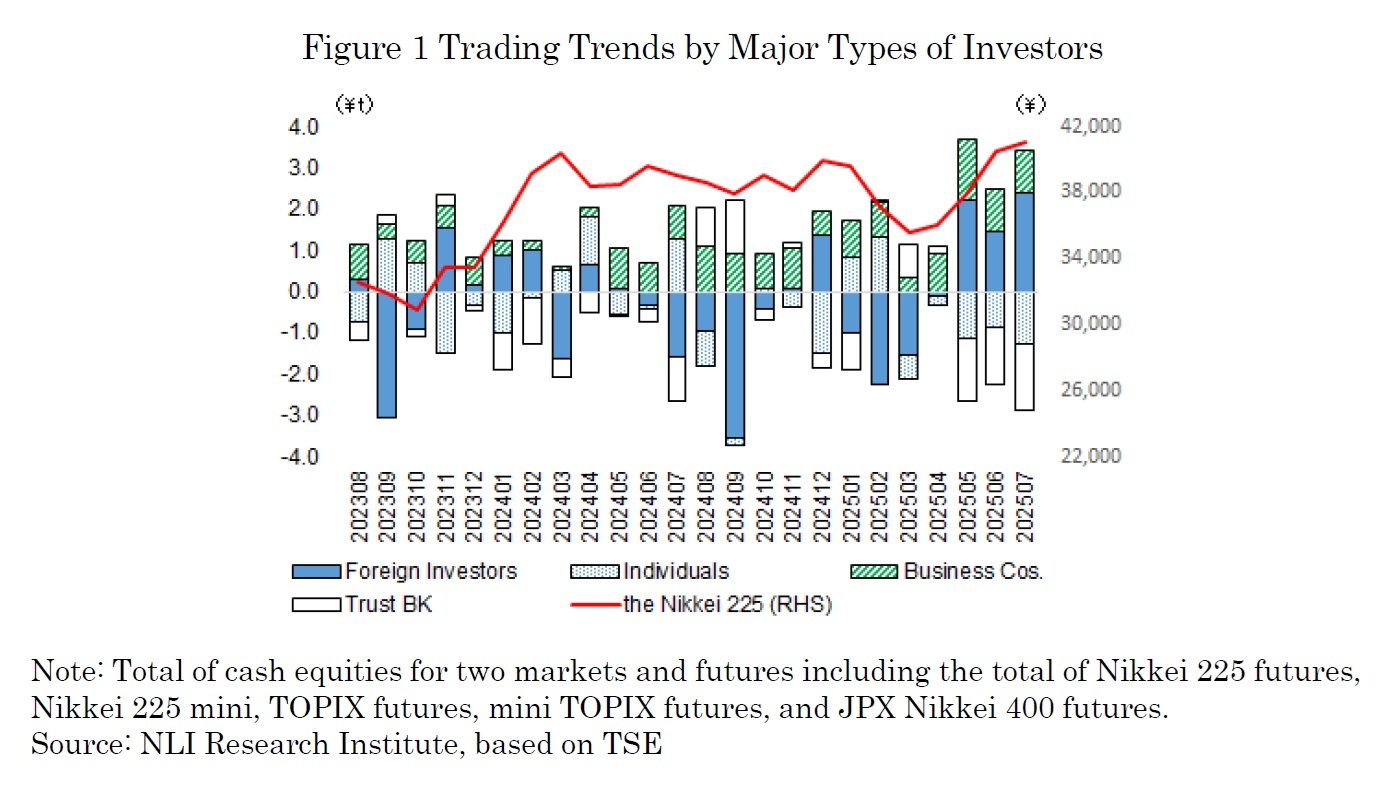
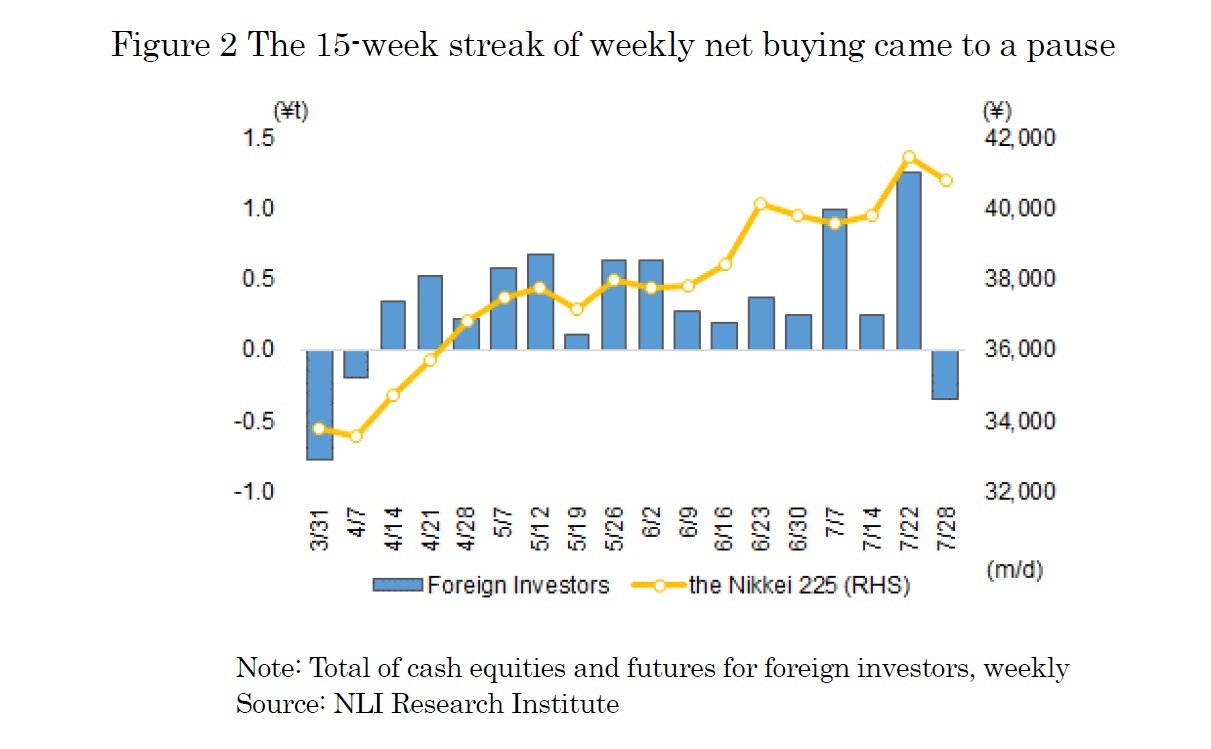
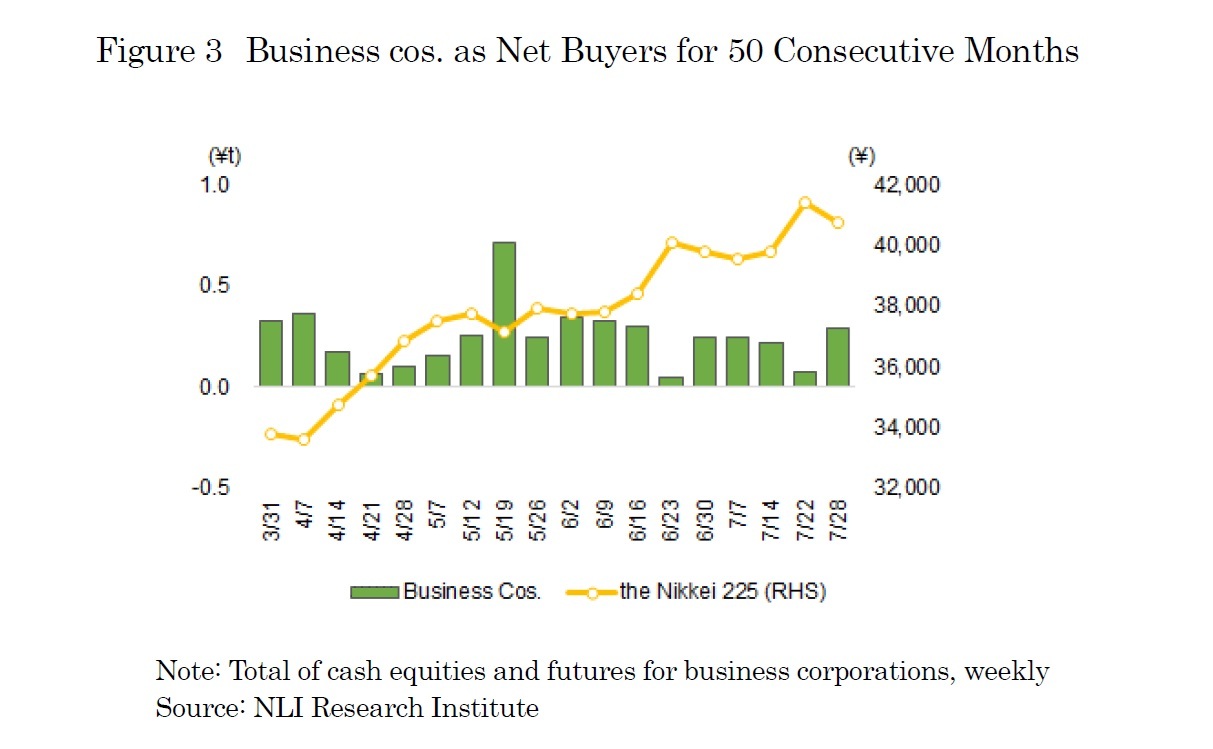
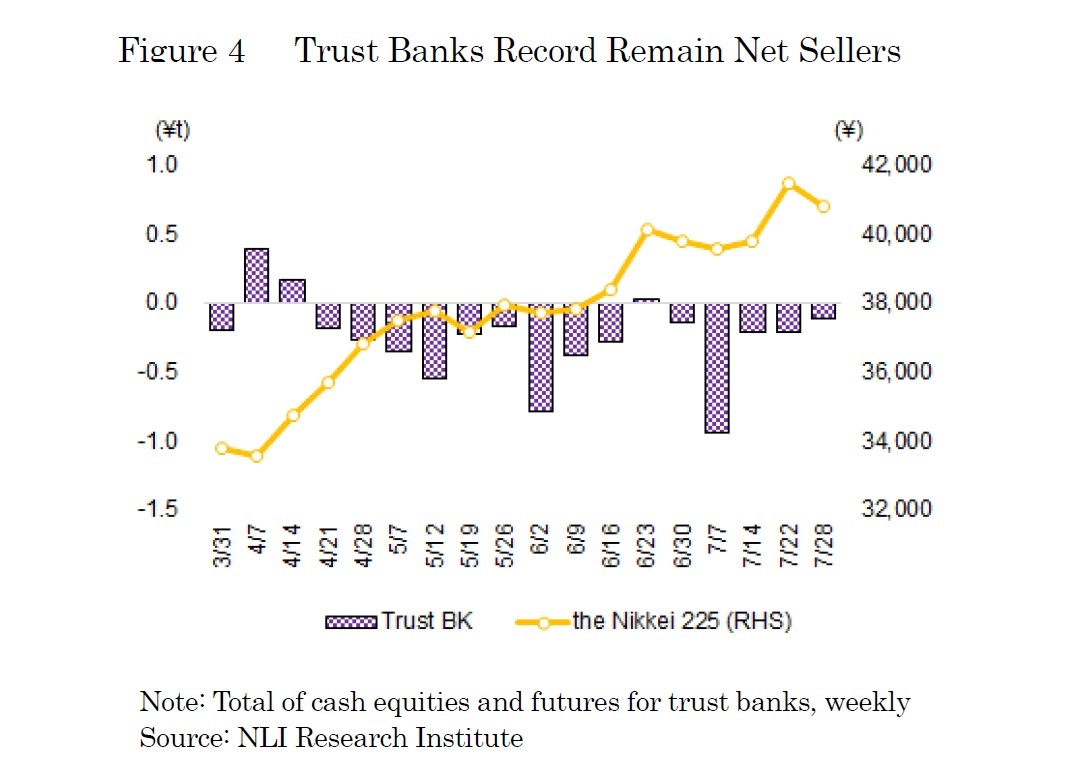
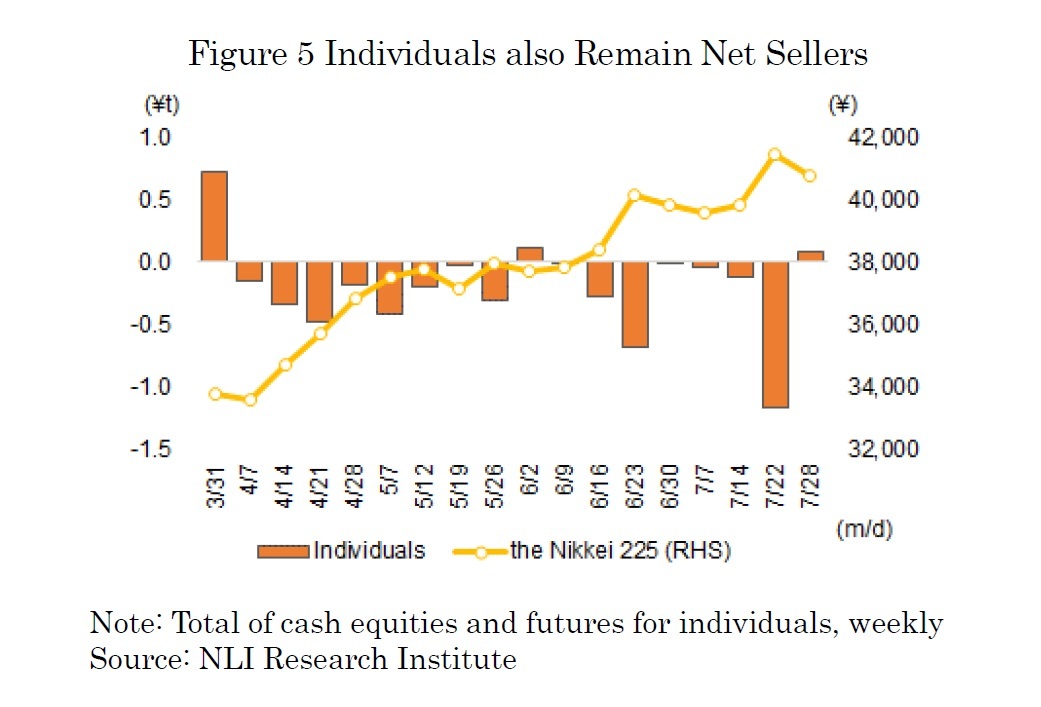

 各種レポート配信をメールでお知らせ。読み逃しを防ぎます!
各種レポート配信をメールでお知らせ。読み逃しを防ぎます!




